This list may not be official in any of the 7 wonders in India list. But I personally consider the below places in India as Cultural wonders and Engineering marvels. They look so futuristic for the period in which they were built manually out of stones. Even with all the modern technologies available today it will be very difficult to construct such temples or buildings irrespective of the budget and resources.
Table of Contents
1) Kailasa Temple, Maharastra, India
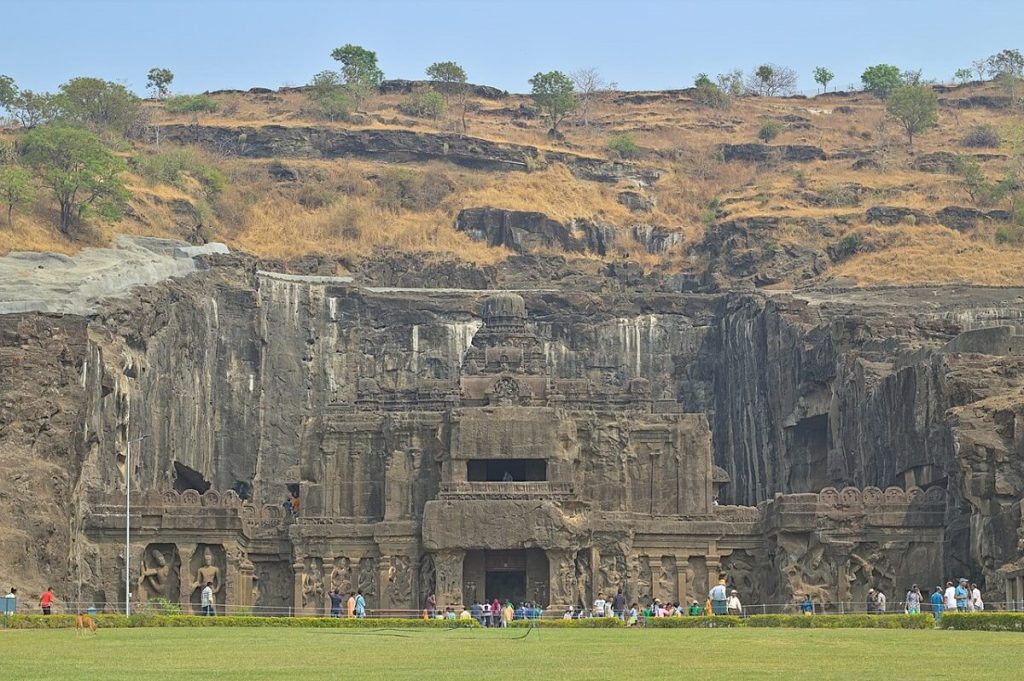
Kailasa Temple is an incredible piece of architectural beauty that stands in Maharashtra, India. This temple is carved out of one single rock, and it took around 200 years to complete. The intricate details and craftsmanship put into this temple are truly remarkable and can leave anyone in awe.
The temple is dedicated to Lord Shiva and is believed to have been built during the Rashtrakuta dynasty in the 8th century. This temple is an excellent example of how engineering and art can be combined to create something truly remarkable. India’s 7 wonders list will not be complete without Kailasa Temple.
The temple is not only a religious site for Hindus but also attracts people from around the world who are interested in ancient architecture and history. The beauty of Kailasa Temple is something that cannot be described in words and must be seen in person to truly appreciate its magnificence.
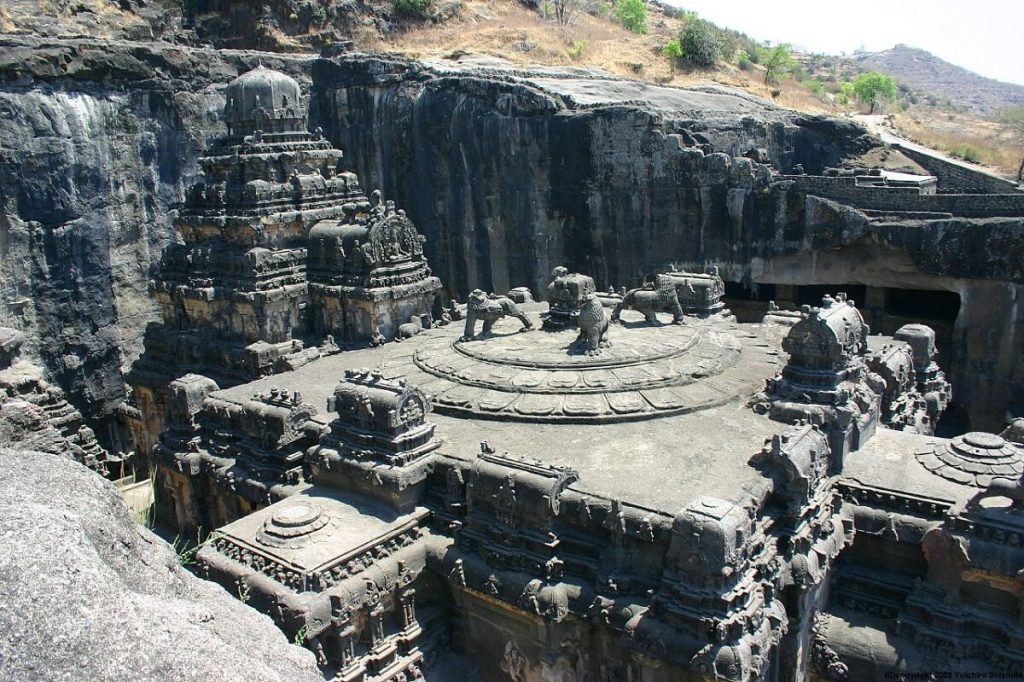
2) Brihadisvara Temple, Thanjavur, India
The Brihadisvara Temple is a magnificent ancient Hindu temple located in the city of Thanjavur in the Indian state of Tamil Nadu. This architectural marvel was constructed during the Chola dynasty in the 11th century and is considered a UNESCO World Heritage Site.
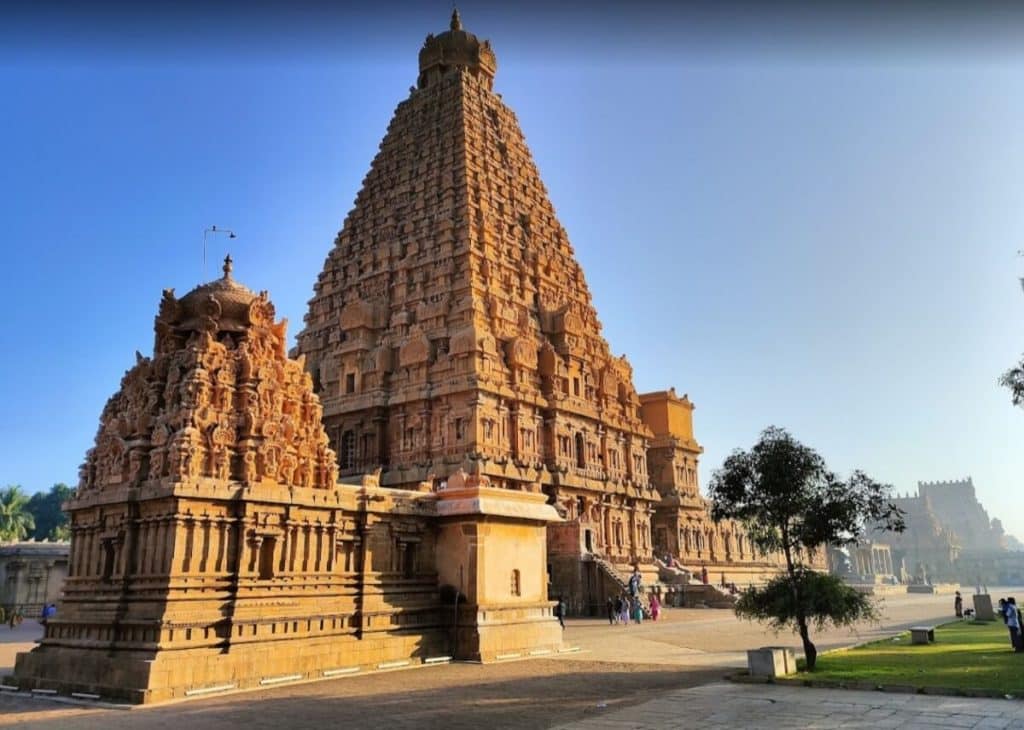
The temple is dedicated to Lord Brihadeeswara, an incarnation of Lord Shiva, and boasts a towering vimana (tower) that stands at over 200 feet tall. The intricate carvings and sculptures on the walls of the temple are truly awe-inspiring and depict various mythological stories and deities. The temple also has several smaller shrines and mandapas (halls) within its complex.
The Thanjavur Temple is an architectural marvel that has been standing for centuries. One of its most fascinating features is the unique way in which the shadow of the temple’s tower falls on the ground. Despite the sun’s movement throughout the day, the shadow always falls within the perimeter of the temple’s base. This phenomenon has puzzled scientists and engineers alike.
However, many believe that it has to do with the precise calculations and the careful construction of the temple. Some theories suggest that this could be the result of advanced mathematical principles that were used to build the temple. The Thanjavur Temple is not only a place of worship, but also a testament to the ingenuity and skill of ancient Indian architects and sculptors. It is a must-visit destination among 7 wonders in India for anyone interested in history, art, and spirituality.
3) Khajuraho Temple, Madhya Pradesh India
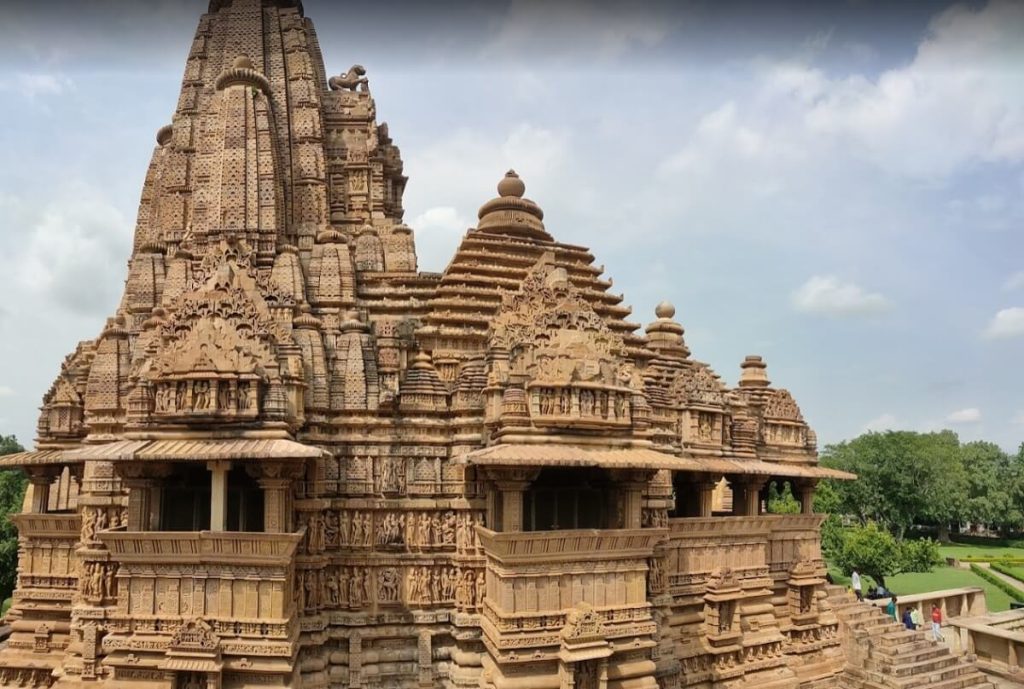
The Khajuraho Temple is an iconic landmark in Madhya Pradesh, India. This group of temples is famous for its stunning architecture and intricate carvings. Built between the 10th and 12th centuries, these temples are a UNESCO World Heritage Site and attract tourists from all over the world.
The intricate stone carvings depict scenes from mythology, daily life, and even eroticism. Visitors can marvel at the craftsmanship and attention to detail that went into creating these pieces of art. In addition to their aesthetic value, the Khajuraho Temples have significant cultural and historical importance, providing insight into the religious and social practices of ancient India.
Whether you’re a history buff or just appreciate beautiful architecture or want to see seven wonders of India, a visit to the Khajuraho Temple is an absolute must!
4) Madurai Meenakshi Amman Temple, Tamilnadu, India
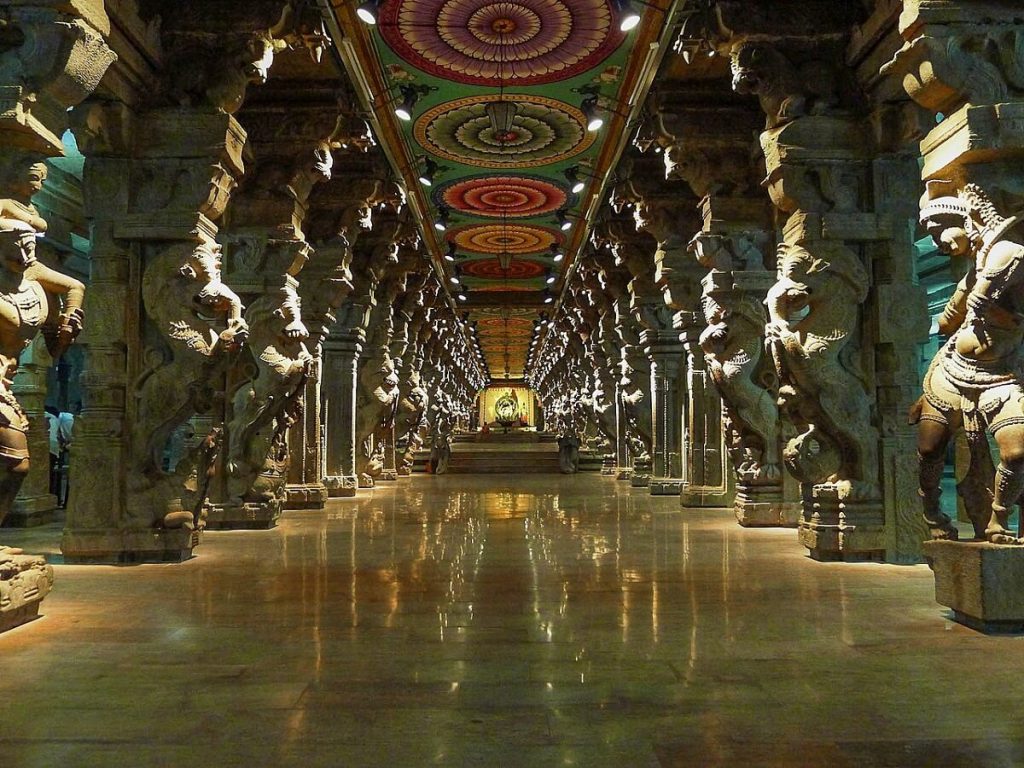
Madurai Meenakshi Amman Temple is a world-renowned Hindu temple that is located in Tamilnadu, India. The temple is dedicated to Goddess Meenakshi, who is believed to be an avatar of the Hindu goddess Parvati. The temple has a rich history and is said to have been built over 2000 years ago.
This amazing temple is known for its magnificent architecture, intricate carvings, and beautiful sculptures that depict various events from Hindu mythology. It is a must-visit destination for anyone interested in learning about Indian culture and religion.
The temple complex is spread over a vast area and is home to numerous shrines, halls, and prayer rooms. The temple is buzzing with activity all year round and is a popular pilgrimage site for devotees from across the world. The temple’s annual festival, Meenakshi Tirukalyanam, is a spectacular event that draws in huge crowds. If you’re planning a trip to India, a visit to the Madurai Meenakshi Amman Temple is a must-do activity!
Madurai Meenakshi Amman Temple is one of the 7 wonders of the India. It has a fascinating history riddled with tales of bravery, devotion, and resilience. One such story is about a hidden statue that saved the temple during a Mughal attack in the 14th century. Legend has it that during the attack, the invaders were determined to destroy the temple and its sacred idols. However, the priests of the temple had a secret plan to protect the most revered statue of the Mother Goddess Meenakshi. They covered it with a thick layer of lime and hid it inside the temple’s walls.
The Mughal army eventually arrived and began their attempts to demolish the temple. However, to their surprise, they were unable to find the statue of Meenakshi despite their relentless efforts. Frustrated, they eventually gave up and left the temple untouched. As a result of the clever plan of the priests, the temple and its sacred statue were saved from destruction.
The hidden statue remained undiscovered and untouched for many years until it was eventually rediscovered during renovations in the 17th century. Today, the statue of Meenakshi is celebrated and revered by devotees from all over the world, and the story of its miraculous escape during the Mughal attack continues to inspire and captivate people.
5) Sun Temple, Modhera, Gujarat, India
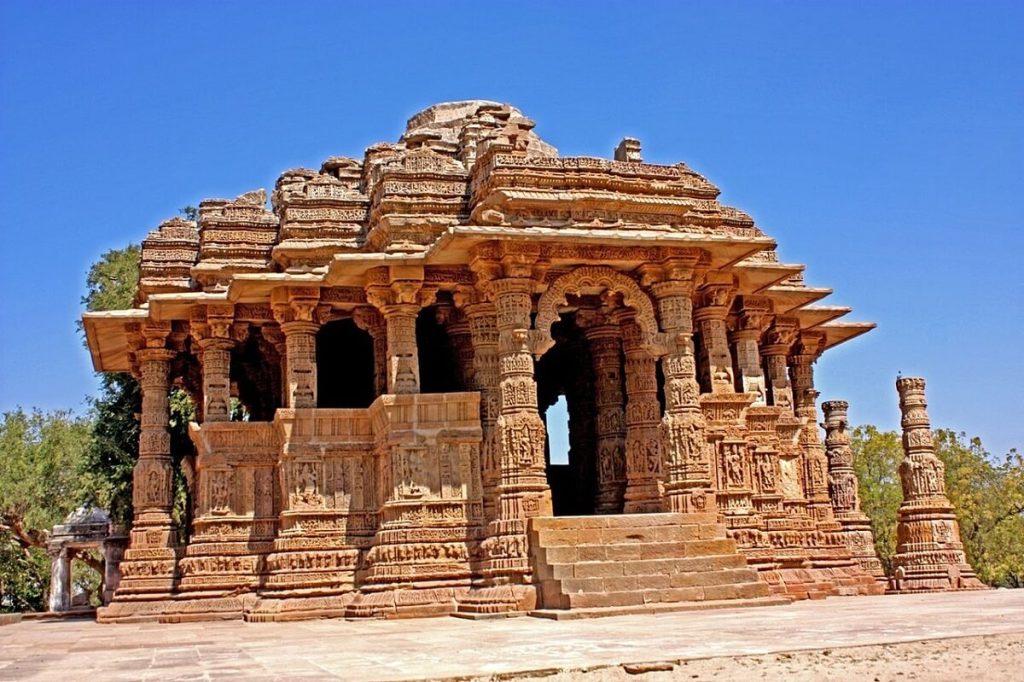
The Sun Temple in Modhera, Gujarat, India is a stunning example of ancient Indian architecture. Built in the 11th century, it’s a tribute to the Hindu sun-god, Surya. The temple is renowned for its intricate carvings and stunning stone sculptures.
The temple has three parts: the Surya Kund, the Sabha Mandap, and the Guda Mandap. The Surya Kund is a stunning stepwell with more than a hundred intricately carved pillars. The Sabha Mandap is a hall for public gatherings with beautiful carvings and sculptures depicting stories from Hindu mythology. The Guda Mandap is the main shrine with a beautifully carved statue of Surya.
Modhera Sun Temple is a marvel of architecture and astronomy. On the equinox, which is when the Sun is directly overhead the equator, the shadows in the temple add to its magnificence. One of the most interesting phenomena that occurs during the equinox at the Modhera Sun Temple is that there are no shadows on the ground due to the way the temple was built.
The temple is constructed in such a way that the sun rays fall directly on the main deity of the temple. This indicates the precise time of the equinox and is a testament to the astronomical knowledge of the designers who built the temple. It’s not just a coincidence but a calculated outcome of the architectural and astronomical design of the temple.
Visitors flock to Modhera Sun Temple during the equinox to witness this incredible phenomenon and to marvel at the intricate design of the temple. The Modhera Sun Temple is a prime example of how astronomy and architecture can work together to create something truly awe-inspiring. The temple is a popular tourist destination in India and is a must-visit for those who are interested in history, architecture, and Hindu mythology.
6) Hampi, Karnataka, India
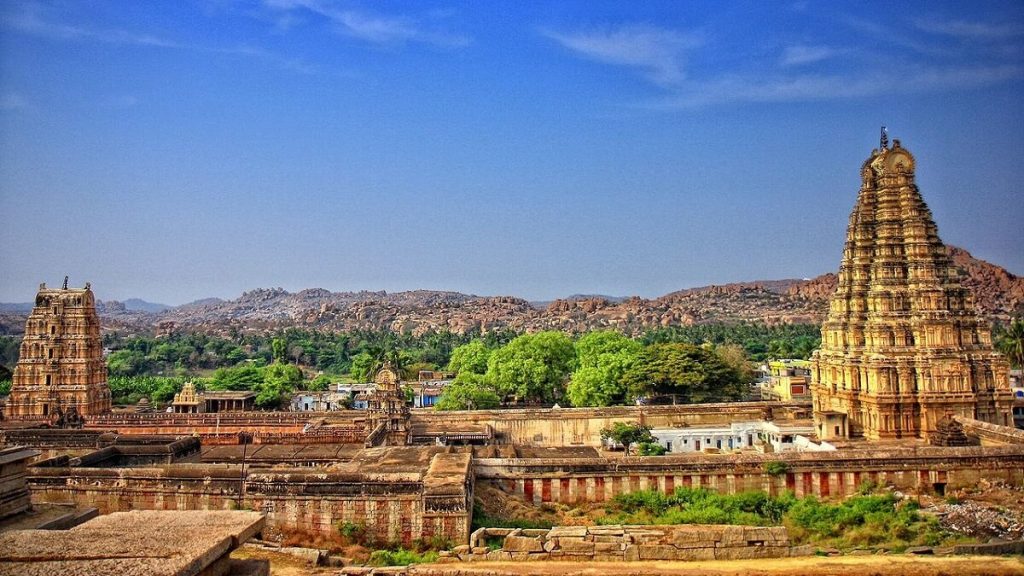
Hampi, located in the Indian state of Karnataka, is a historic city that dates back to the 14th century. It was once the capital of the Vijayanagara Empire and served as a major center of Hindu culture and religion. Today, Hampi is a UNESCO World Heritage site and attracts thousands of tourists each year.
The city boasts numerous ancient temples and ruins, such as the Vittala Temple and the Hampi Bazaar, that provide a glimpse into the rich history of the region. The natural landscape of Hampi is also a sight to behold, with stunning rock formations and scenic views of the Tungabhadra River.
The destruction of Hampi by Mughal soldiers was a devastating event in the history of India. Hampi was once a flourishing city and the capital of the Vijayanagara Empire. However, in 1565, the Mughal army, led by Sultanate allies, attacked and destroyed the city, leaving it in ruins. The destruction of Hampi was a tragic loss for Indian culture and history, as it was home to many magnificent temples, monuments, and structures that showcased the incredible architectural and artistic skills of the Vijayanagara Empire.
The destruction of Hampi is a reminder of the ongoing conflicts and battles that have ravaged India for centuries, leaving behind a trail of destruction and loss. Despite this tragedy, Hampi remains an important cultural and historical site, drawing visitors from around the world who come to witness the beauty and grandeur of what remains.
Visitors can immerse themselves in the local culture by trying traditional cuisine and exploring the vibrant street markets. For history buffs and nature enthusiasts alike, Hampi is a must-visit destination that offers a unique and unforgettable experience.
7) Old Step Wells in India
Step wells are a unique and fascinating feature of Indian architecture and culture. These ancient Step wells were built for the dual purpose of providing water for drinking and irrigation while also serving as a place of social gathering and religious ceremonies. The 7 wonders of india list will not be complete without them. Many of these step wells date back to the 2nd century BC and while some have fallen into disrepair or been destroyed over time, many still survive as majestic examples of Indian engineering and design.
Chand Baori, Rajasthan, India
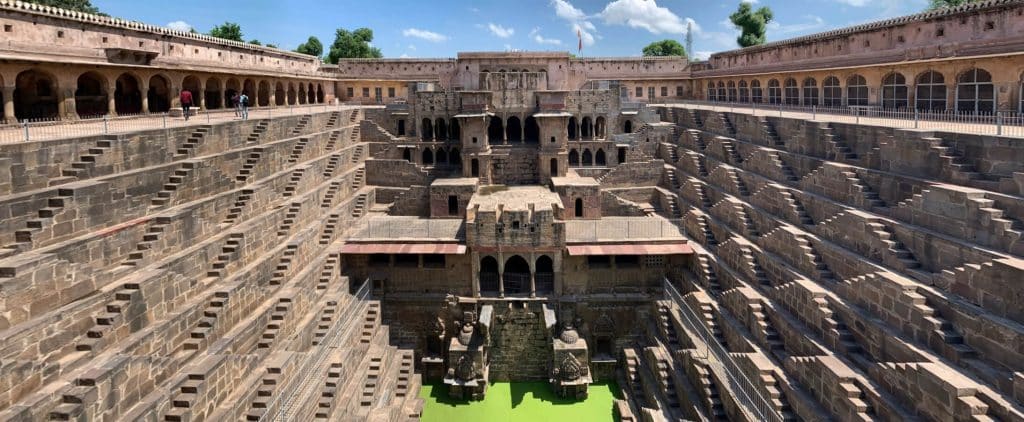
Chand Baori, located in the state of Rajasthan, India, is one of the most fascinating architectural wonders in the world. This ancient stepwell was built over a thousand years ago, and it continues to be a popular destination for tourists and architecture enthusiasts from all over the world. Its impressive dimensions are hard to miss, with 13 floors of stairs that descend 30 meters deep into the earth.
Chand Baori was built to collect rainwater during the monsoon season, and it can hold up to 20,000 gallons of water at any given time. The symmetrical design and intricate carvings on the walls of the stepwell are awe-inspiring, and it’s amazing to think that these were hand-carved centuries ago with basic tools. To this day, the stepwell remains a testament to the architectural prowess and ingenuity of ancient Indian civilizations.
Rani ki Vav in Gujarat, India

Rani ki Vav is a stunning stepwell located in Gujarat, India. It is a UNESCO World Heritage site and attracts tourists from all over the world. The architectural ingenuity of the stepwell is evident in its intricate carvings and design. Built in the 11th century, Rani ki Vav served as a water source for the nearby towns and villages.
The walls of the stepwell are adorned with sculptures depicting various Hindu deities and mythological scenes. The stepwell was rediscovered in the 1940s after being buried under centuries of silt and debris. Restoration work has since been carried out to preserve this ancient wonder. A visit to Rani ki Vav is a must for anyone interested in history, architecture, or art!
Agrasen Ki Baoli, Delhi, India
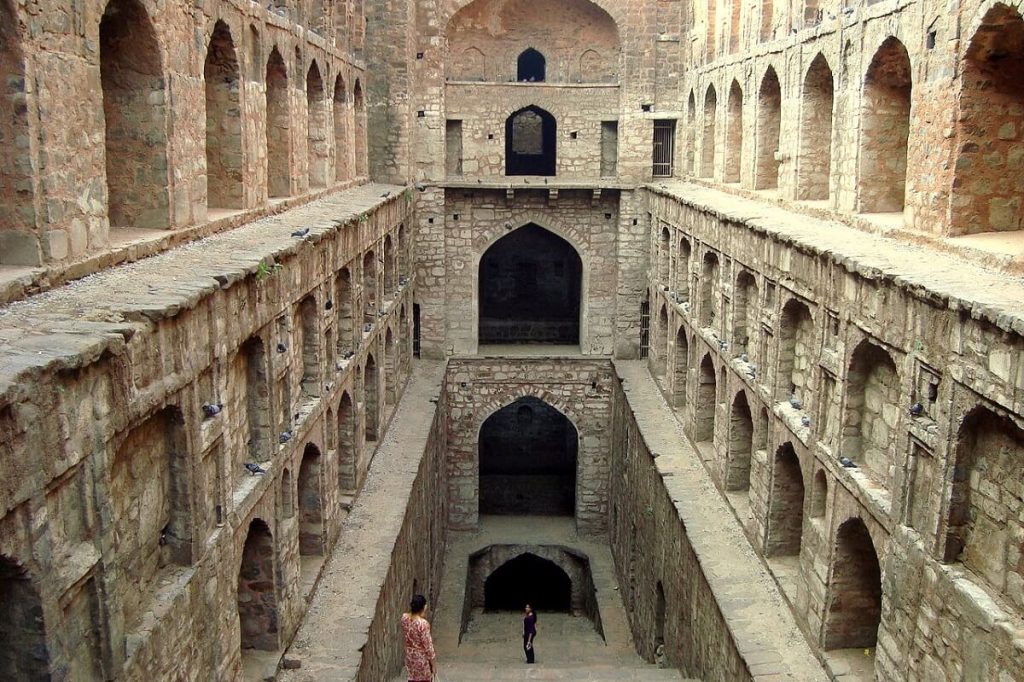
Agrasen Ki Baoli is a popular tourist attraction located in the heart of Delhi, India. This historic stepwell is believed to have been built during the medieval period by the legendary king Agrasen. The Baoli, which means stepwell in Hindi, is a marvel of ancient engineering and architectural genius.
The 103 steps of the well lead down to the water that once provided a vital source of water for the residents of the surrounding area. Today, the Baoli is a popular destination for both locals and tourists alike, who come to marvel at the stepwell’s intricate design and learn more about India’s rich history and cultural heritage. With its beautiful architecture and deep cultural significance, the Agrasen Ki Baoli is a must-visit destination for anyone traveling to Delhi!
Conclusion
There are many more wonders of Ancient India like Konark Sun Temple, Harmandir Sahib Golden Temple, Nalanda etc and it is impossible for any one to limit the number of wonders in india to 7 as it has far too many than we can think off. If you know about any more wonders of India which are better then the above mentioned 7 wonders of India, share the details of the same via your comments.




No Responses